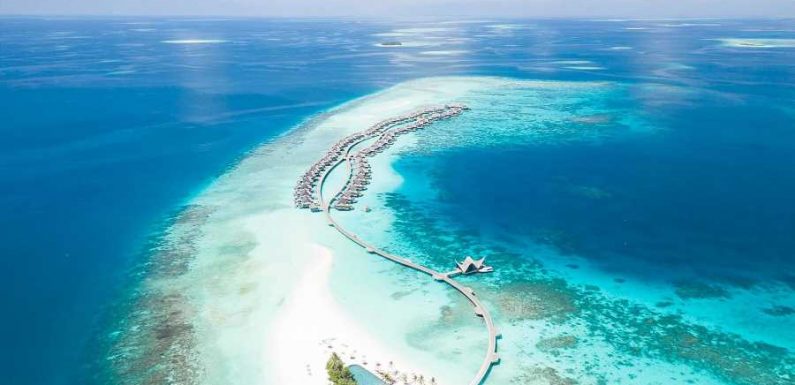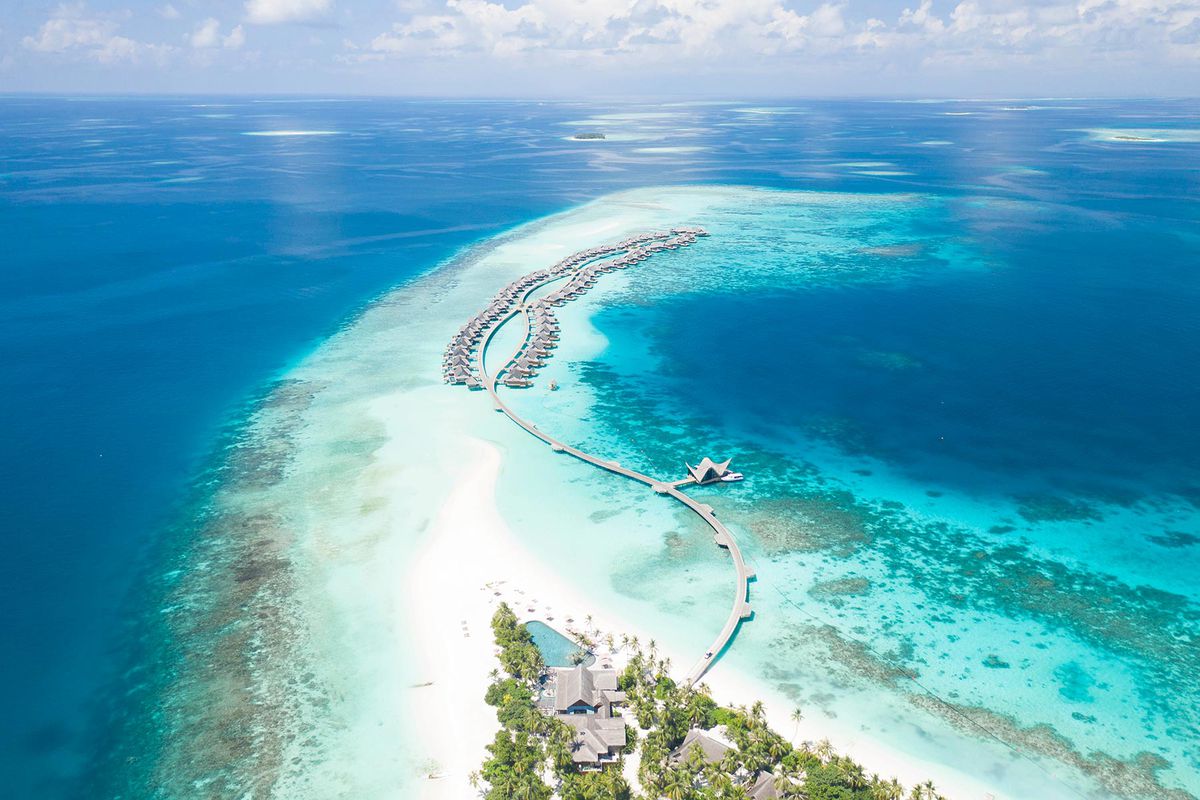
The beauty of the Maldives comes naturally, but the hospitality infrastructure has been built up by hoteliers over the last 50 years. In the '70s, the Maldives was a remote, largely uninhabited archipelago. Fishermen lived on the islands, but there were no regular flights to the area and no investment in the Maldives as a destination. Without tourism infrastructure, the small airstrip on Hulhule Island — which could barely be considered a commercial airport — didn't see much traffic, and the travel world remained entirely unaware of the Maldives.
Today, the Maldives — which is made up of nearly 1,200 tiny, pristine islands — tells a different story. The development and growth year over year has been exponential. Between 2018 and 2021, nearly 50 new resorts have opened or are in the process of opening. And that growth rate is now considered fairly typical in the Maldives; 11 new resorts came online in 2016, followed by approximately 15 new properties in 2017.
The Maldives is today known for their one island, one resort concept. The multitude of picturesque little islands affords hotels the opportunity to develop their own private island community. The first Maldives resort opened in 1972: Kurumba. It came about when George Corbin, a travel agent from Italy, met with Ahmed Naseem from the Maldives Embassy. Corbin was looking for an under-the-radar island escape for his clients, and Naseem brought him to the untouched islands of the Maldives in 1971. A year later, they returned with journalists and photographers to show the potential of the Maldives to the world.
Kurumba opened in October 1972, welcoming guests to a previously unheard of concept: a Maldivian hotel. The 30-room resort was booked solid in their first year. Corbin and Naseem set the precedent that Maldives had immense tourism potential, and Kurumba's success solidified that notion. Because of the example Kurumba set, foreign investments came rolling in, and as the tourism infrastructure has taken shape, the country's economy has vastly improved. The Maldives population has doubled from 156,000 residents in the '80s to 300,000 in 2012. And Maldivian residents' incomes, life expectancies, and literacy rates have all significantly increased in that time.
Now, 50 years from the birth of the Maldives as a tourist destination, the focus is on preservation. The last five decades have seen tourists come in droves, and where there was once untouched reef, there are now overwater bungalows, underwater restaurants, and more divers, snorkelers, and swimmers than the ecosystem ever bargained for. Fortunately, those opening new hotels are all too aware that the reason people came to Maldives in the first place was to experience the islands' natural beauty. And as a result, the hotels are working hard to preserve and protect the Maldivian ecosystem.
Patina Maldives, Fari Islands has facilities powered entirely by solar energy, zero-waste kitchens, and a marine plastic recycling program reducing ocean pollution. Patina, which just opened in spring 2021, proves that the properties opening in the Maldives these days have to lead with sustainability. In their first season, they are already working toward their goal of being 50 percent solar powered by 2030. JOALI Maldives is growing coral at the hotel's underwater nursery, so they can then transplant the coral to a snorkel trail accessible to the hotel's guests. Their goal is not only to repair the parts of the nearby reef that have been even slightly damaged, but also to get guests involved in the reef restorative initiative. And Four Seasons Resorts Maldives is caring for injured Olive Ridley turtles in order to release them back into the wild. Their turtle rehab clinic, which collaborates with zoos and researchers in Europe to improve the health of Maldivian turtles, is run by the Four Seasons' marine conservation team, Marine Savers.
In 50 years, the Maldives went from 1,192 islands with no foreign investment to a tropical paradise filled with private island resorts. Interest in both visiting the Maldives and developing hotels there is still at an all-time high, but with every trip booked and every hotel opened, there is an emphasis on preserving the unadulterated beauty those first visitors fell in love with in the 1970s.
Source: Read Full Article












